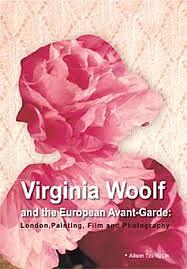內容簡介
內容簡介 Virginia Woolf and the European Avant-Garde: London, Painting, Film and Photography explores the aesthetics of Woolf’s image of London in her writings. The image of London does not make Woolf a “stay-at-home” writer. Through her life long engagement with the visual arts, art criticism and philosophy, Woolf finds related expression in literature, as one can see in her narrative: the Post-Impressionist dual vision of painting in writing, Cubist cinematic flashback and montage of shots, and Surrealist snapshort of life, death and desire. Woolf’s narrative from defines her own modernism in the context of the city. Her vision shows the dialectics of inner and outer spheres, in which the aesthetics of the urban gendered gaze is significant.
作者介紹
作者介紹 ■作者簡介Allison Lin (林孜郁)Allison Tzu Yu Lin does her doctorial research at Goldsmiths College, University of London. She is now teaching at National Taiwan Ocean University, Keelung, TAIWAN
產品目錄
產品目錄 Preface ACKNOWLEDGEMENTS LIST OF ABBREVIATIONS PROLOGUE Androgynous Woolf Re-discovering Woolf: an Androgynous Textuality Woolf’s Art and the Visual Woolf and Her London The Aesthetics of the Urban Gaze CHAPTER ONE Virginia Woolf and the Significance of the Eye Introduction Reading Virginia Woolf and the Visual Woolf’s Roger Fry and Post-Impressionist Psychology Bell’s Significant Form and Woolf Woolf’s Hybrid Approach Woolf’s Dual Vision in the Urban Space Gendering the Urban Gaze Conclusion CHAPTER TWO The Painter’s Eye in Writing: the James Brothers and Woolf’s Experimental Practices Introduction William James’s Stream of Thought Henry James’s Impressionist Paris, Pictorial London, and Woolf’s Response Walking‘a Map of Emotions’: Woolf’s London in Night and Day Painting in Writing: Woolf’s Experimental Short Fictions Conclusion CHAPTER THREE The Dialectic of Time in Film Form: Mrs Dalloway and ‘The Cinema’ Introduction Part I: The Art of the Cinema in Philosophy and Literature – Bergson, Deleuze and Woolf Part II: The Gaze, Montage and Time in Mrs Dalloway Part III: The Caligari Connection in Clive Bell and Virginia Woolf Conclusion CHAPTER FOUR Photography in The Years and Three Guineas Introduction Part I: Virginia Woolf and Victorian Aesthetics Part II: The Maternal Imaginary and the Gaze – Barthes and Irigaray Part III: Photography in The Years and Three Guineas ‘Her face, as if bathed in inner light, …’: Conclusion Epilogue The Bodiless and the Invisible: Woolf’s Psychological London BIBLIOGRAPHY
